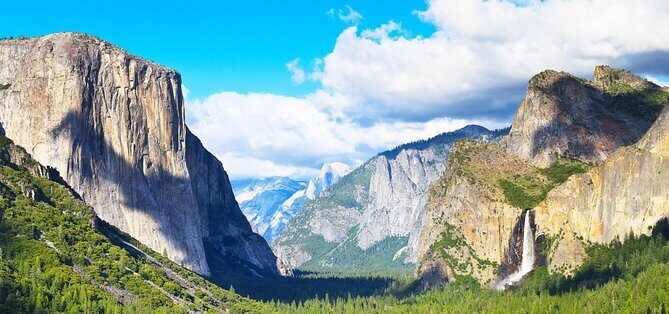Yosemite weather has a Mediterranean climate with mild, wet winters and hot, dry summers. Here in this article we have shared Yosemite weather forecast update for 7 days. you can also see the weather in Yosemite today.
The climate is influenced by the Sierra Nevada mountain range, which helps to create a rain shadow effect, resulting in drier conditions on the eastern side of the park.
Yosemite Weather Forecast Today

It’s important to be prepared for changing weather conditions when visiting Yosemite National Park and to check current weather and road conditions before planning your trip.
Here is the Temperature forecast in Fahrenheit (F°) for Yosemite National park.
Yosemite Weather this Weekend (7-Day Forecast)
In the summer, temperatures in Yosemite can reach the 90s°F (32-37°C) in the valley, while temperatures at higher elevations tend to be cooler.
In the winter, temperatures in the valley can drop below freezing, and snow can accumulate at higher elevations. Overall, the climate in Yosemite is pleasant and attracts millions of visitors each year.
The average annual precipitation in Yosemite Valley is around 37 inches (94 cm), with most of it falling between November and April as snow.
Also Read: 12 Best Things to do in Yosemite
Yosemite Weather Update by Month
Yosemite National Park has a Mediterranean climate, characterized by hot, dry summers and cold, wet winters. Here are some general weather patterns in Yosemite throughout the year:
Yosemite Weather in Spring (March-May)
During the spring, temperatures begin to warm up, but snow can still be present at higher elevations. March and April are typically the wettest months in Yosemite, with rain and snow showers common.
Yosemite Weather in Summer (June-August)
Summers in Yosemite are warm and dry, with temperatures averaging in the 80s (°F) during the day and dropping to the 50s (°F) at night. Thunderstorms are common in the afternoons and evenings, especially in the high country.
Yosemite Temp in Fall (September-November)
Fall is a great time to visit Yosemite, with mild temperatures and colorful foliage. The days are still warm, but the nights can be chilly. September and October are generally dry months, but rain and snow can occur in November.
Yosemite Weather in Winter (December-February)
Winter in Yosemite is cold and snowy, with temperatures ranging from the 20s (°F) to the 50s (°F) during the day. Most of the precipitation falls as snow, and the park’s higher elevations can receive several feet of snow in a single storm. Some roads and facilities may be closed during the winter months due to snow and ice.
Snowfall in Yosemite
- Snowfall in Yosemite National Park typically occurs between November and April, with the heaviest snowfall usually occurring in December and January.
- However, snowfall patterns can vary from year to year, so it’s always a good idea to check the current weather and road conditions before planning a trip to the park, especially during the winter months.
- The National Park Service website for Yosemite provides updated information on weather and road conditions throughout the year.
Yosemite Air Quality Index (AQI)
Yosemite Air Quality is Satisfactory, and air pollution poses little or no risk. The AQI in Yosemite can range from 0-50.
For example, in 2021, the average annual AQI in Yosemite was 32, which is considered good. In 2020, the average annual AQI was 44, which is still within the good to moderate range. However, in 2018, the average annual AQI was 55, which is at the upper end of the moderate range.
The air quality index (AQI) is a measure of how clean or polluted the air is in a particular area. The AQI is calculated based on levels of five major air pollutants regulated by the Clean Air Act: ground-level ozone, particulate matter, carbon monoxide, sulfur dioxide, and nitrogen dioxide.
In Yosemite National Park, the AQI can vary depending on factors such as wildfires, weather patterns, and human activity. The National Park Service operates several air quality monitoring stations throughout the park, which measure levels of particulate matter, ozone, and other pollutants.




[…] Also Read: Yosemite Weather Guide […]